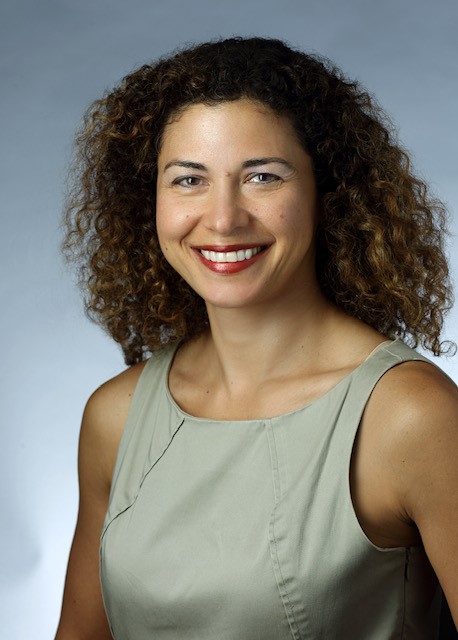Takeaway
Read these 10 tips so that next time your pager goes off, you can be an outstanding consultant!

Lifelong Learning in Clinical Excellence | December 16, 2019 | 4 min read
By Aline Charabaty, MD, Johns Hopkins Medicine
When the pager goes off or there is a message in your EHR or on your phone, asking you to consult on a patient, it usually triggers some kind of emotion—excitement and pride to be involved in an “interesting” complex case, annoyance to be asked an “insignificant” question, or total indifference when we are too tired at the end of a work day to even think!
Whatever emotions a request brings, it is important to put the focus back on what it means to be a consultant, and find the professional satisfaction in the process. The general definition of a consultant is “a person who provides expert advice professionally, using his/her specialty knowledge and clinical problem solving skills to offer recommendations to improve a situation or resolve a problem.
However, in the medical world, a consultation is more than a professional transaction—it is establishing a productive relationship with the primary team and the patient, knowing that the quality of this relationship can deeply affect the patient care and outcome.
Here are my 10 C-O-N-S-U-L-T-A-N-T tips for a smooth and rewarding process!
C- Communicate with the primary team with kindness and without judgment from beginning to end—clarify the medical question and get the information you need about the overall clinical picture of the patient. This will allow you to assess the urgency of the situation, provide recommendations for diagnostic or therapeutic tests that you need to minimize delay in care until you can see the patient. Do all that without being annoyed, condescending, or judgmental.
Instead of asking, “What’s the problem, why are you paging me,” ask, “How can I help you?”
Instead of “you mean you haven’t checked the lipase?!”, ask, “ I believe a lipase can help us here, can you please order that quickly?”
When you have completed your consult, communicate again with the team to review the key points of your impression and recommendations.
O- Obtain your own information. Don’t rely on the chart (and resist the copy-and-paste reflex). Get the history from the patient directly and perform your own physical exam. Your expertise allows you to pick up on clues that might have been overlooked by others.
N- No questions left behind: remember, there is no question too small or too insignificant for the primary team. What seems like a simple problem to you with a clear answer is creating medical anxiety and concerns for the non-specialist.
S- Summarize a focused and clear assessment and plan. Provide a final or limited differential diagnosis, and be as specific as possible in your recommendations (the clinical or labs parameters to follow, the dose and duration of meds…). For example, “tapering down prednisone” is something you can do systematically in your sleep, but doesn’t convey much information to the primary team on how to do it.
Finally, outline a contingency plan if the patient fails to improve or if a test you ordered shows an anticipated result
U- Unify to reach a consensus: discuss your impression and plan with the team before discussing it with the patient and writing it in the chart. Don’t criticize or point out shortcomings. Nothing is more distressing to a sick patient looking for answers than hearing different opinions from different physicians. A balanced consensus is reached when you put together your expert opinion as a consultant and the comprehensive view of the primary team.
L- Learn: a medical or surgical consult is a great opportunity to learn. Do a literature search for an uncommon diagnosis or clinical presentation, put the pieces of the puzzle together with other consultants in a complex case, and be exposed to updates from other specialties.
T- Timeliness: evaluate and complete your non-urgent consult or at least communicate your impression and recommendations with the primary team within 24 hours. If you can’t see the patient within a reasonable time frame, let the team know, and offer an alternative, a colleague who is available, or an initial evaluation by a trainee or advanced practitioner.
A- Advocate for the patient: once you’re consulted, you’re part of the team, not just a bystander providing recommendations and walking away. Everyone is responsible to ensure the patient gets the best quality of care possible and not only the primary team.
N- Nurture the relationships: create a productive environment with the primary and consulting physicians. Let this be an opportunity to forge meaningful relationships with others. Nothing fights burn out better than enjoying the process of sharing medical ideas in a collegial environment. Plus, you never know when you need a favor back for the care of your own patient.
T- Teach and educate: use this opportunity to educate the primary team on a disease process, treatment efficacy and side effects, diagnostic test indication and interpretation. Again, do this in a kind and inclusive way, to empower and elevate everyone’s knowledge.
In addition to medical knowledge, being a consultant requires good communication skills and a collaborative approach to patient care, culminating in a shared decision making process between you, the rest of the caring team, and the patient. Next time that pager goes off, I hope it brings the excitement of the gift of a new connection and relationship!

